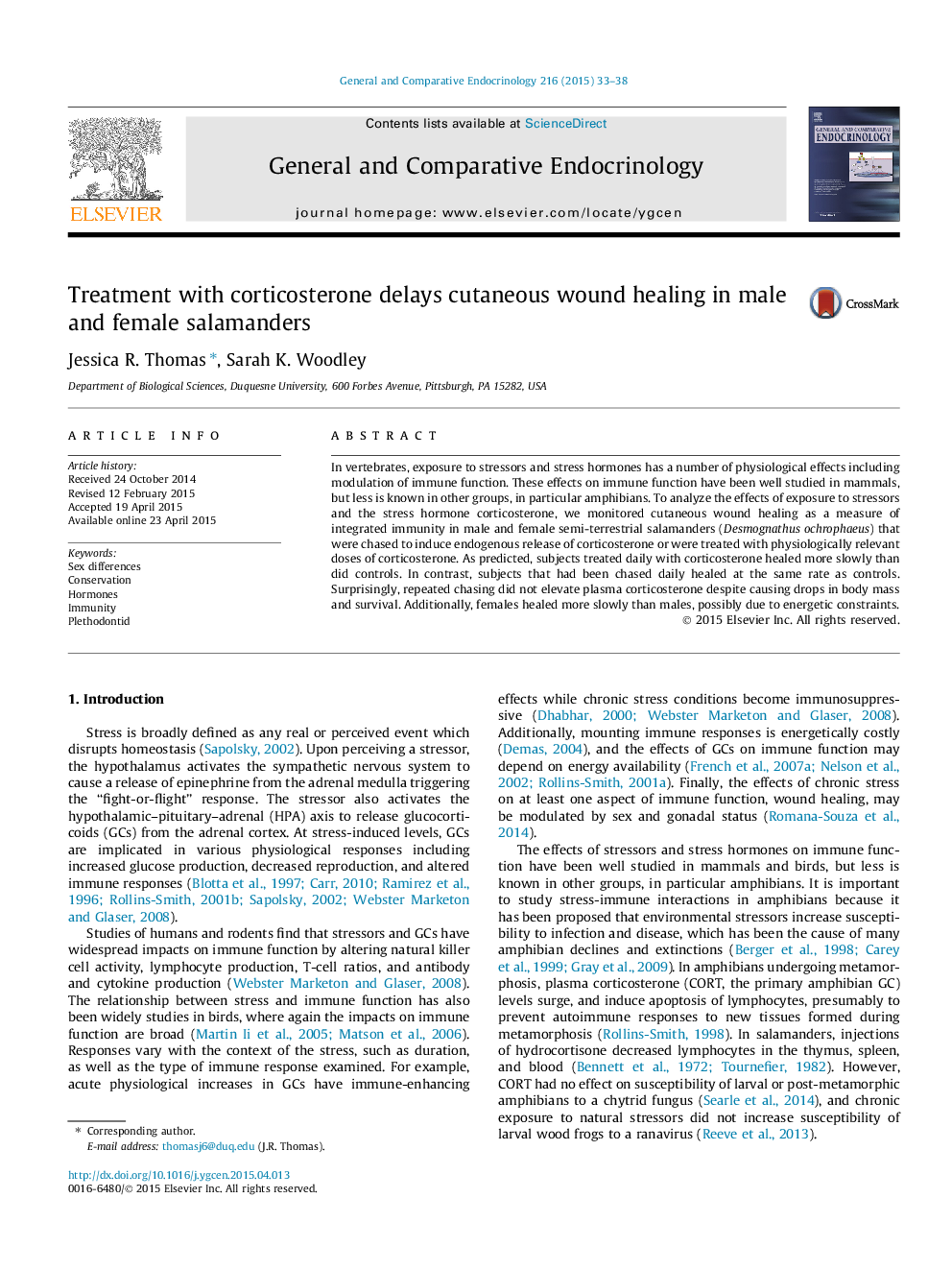| Article ID | Journal | Published Year | Pages | File Type |
|---|---|---|---|---|
| 5900993 | General and Comparative Endocrinology | 2015 | 6 Pages |
â¢Repeated treatment with corticosterone delayed cutaneous wound healing in salamanders.â¢Females healed more slowly than did males.â¢Chasing did not delay healing.
In vertebrates, exposure to stressors and stress hormones has a number of physiological effects including modulation of immune function. These effects on immune function have been well studied in mammals, but less is known in other groups, in particular amphibians. To analyze the effects of exposure to stressors and the stress hormone corticosterone, we monitored cutaneous wound healing as a measure of integrated immunity in male and female semi-terrestrial salamanders (Desmognathus ochrophaeus) that were chased to induce endogenous release of corticosterone or were treated with physiologically relevant doses of corticosterone. As predicted, subjects treated daily with corticosterone healed more slowly than did controls. In contrast, subjects that had been chased daily healed at the same rate as controls. Surprisingly, repeated chasing did not elevate plasma corticosterone despite causing drops in body mass and survival. Additionally, females healed more slowly than males, possibly due to energetic constraints.
